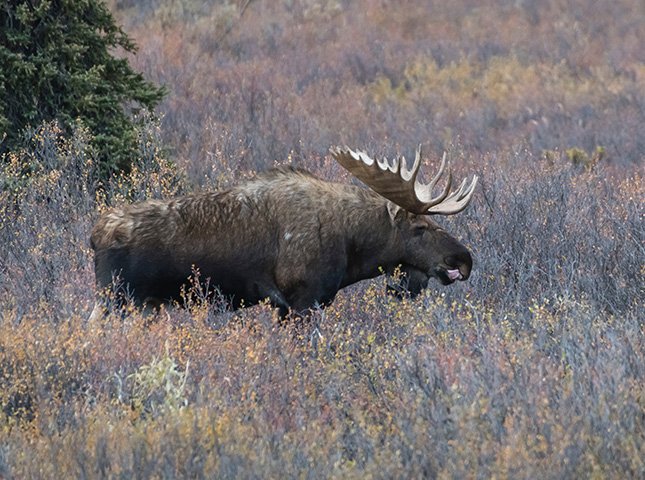Moose, the largest members of the deer family, are fascinating creatures that have intrigued many wildlife enthusiasts and researchers. One of the questions that often arise about these majestic animals is, “Where do moose sleep?” Understanding the sleeping habits of moose can provide insights into their behavior, habitat preferences, and survival strategies.
Table of Contents
Key Takeaways
- Moose typically sleep in dense forests or thickets.
- They prefer areas that provide cover from predators and harsh weather conditions.
- Moose do not have a fixed sleeping schedule; they can sleep during the day or night.
- The sleeping position of a moose can indicate its level of alertness.
Habitats Preferred by Moose for Sleeping
Moose are known to inhabit a variety of environments, from dense forests to open meadows. However, when it comes to sleeping, they have specific preferences.
Dense Forests and Thickets
Moose often choose dense forests or thickets as their sleeping grounds. These areas provide them with the necessary cover from potential predators such as wolves and bears. The thick vegetation also offers protection from harsh weather conditions, especially during winter.
Proximity to Water Sources
Moose are also known to sleep near water sources. Lakes, ponds, and rivers not only provide them with drinking water but also offer a cool environment during the summer months. Moreover, the presence of aquatic plants, a favorite food source for moose, makes these areas even more attractive.
Understanding Moose Sleeping Positions
The way a moose sleeps can tell a lot about its current state and level of alertness.
Lying Down with Head Raised
When a moose lies down with its head raised, it indicates that the animal is in a semi-alert state. This position allows the moose to quickly detect any approaching threats and take action if necessary.
Lying Down with Head Resting on the Ground
In this position, the moose is in a deeper state of rest. However, their keen senses remain active, ensuring they are aware of their surroundings.
Factors Influencing Moose Sleeping Habits
Several factors can influence where and how long a moose sleeps.
Seasonal Changes
During the summer months, moose might sleep for shorter durations due to the increased availability of food. In contrast, during winter, when food is scarce, they might conserve energy by resting more.
Presence of Predators
In areas with a high concentration of predators, moose tend to be more alert and might sleep less deeply. They choose locations that offer better visibility and quick escape routes.
Health and Age of the Moose
Older or sick moose might rest more than healthy adults. Similarly, calves tend to sleep more than mature moose, as they need more rest for growth and development.
Moose and Human Interactions
As human settlements expand, interactions between moose and humans have become more common. It’s not unusual to find moose resting in backyards or even on roads. While these encounters can be fascinating, it’s essential to maintain a safe distance and avoid disturbing the animals.
Frequently Asked Questions
1. How many hours do moose sleep in a day?
Moose do not have a fixed sleeping schedule like humans. Instead, they take multiple short naps throughout the day and night. On average, a moose might sleep for about 4 to 6 hours in a 24-hour period, broken into several short intervals.
2. Do moose have a specific sleeping spot they return to?
While moose do not necessarily return to the exact same spot every day, they do have preferred areas within their territory where they feel safe and comfortable. These areas often provide adequate cover from predators and are close to food and water sources.
3. Are moose territorial about their sleeping areas?
Moose are solitary animals and can be territorial, especially during the mating season. While they might tolerate the presence of other moose in the vicinity, they generally prefer to have their own space when resting.
4. How do moose protect themselves while sleeping?
Moose rely on their keen senses of hearing and smell to detect potential threats while they rest. Their sleeping positions, such as lying down with their head raised, allow them to remain semi-alert and quickly respond to any disturbances.
5. Do moose sleep more during certain times of the year?
Yes, moose tend to rest more during the winter months. With the scarcity of food and the need to conserve energy in colder temperatures, they might spend more time resting and ruminating.
6. Can moose sleep standing up?
While moose can doze off for short periods while standing, they usually lie down for deeper and more extended rest. Standing naps are typically brief and occur when the moose feels relatively safe but wants to remain alert to its surroundings.
7. How do calves sleep compared to adult moose?
Moose calves, like most young animals, require more sleep than adults. They often lie close to their mothers for warmth and protection. As they grow and become more independent, their sleeping patterns will gradually resemble those of mature moose.


